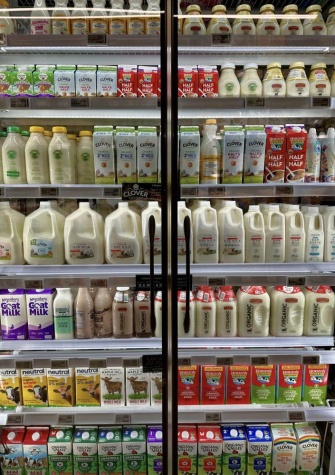
Tyler Pearce | Head Editor
Dec 13, 2023
In recent years, the rise in popularity of nut milks such as almond, cashew, and coconut milk shows a shift in consumer preferences, driven by a combination of health consciousness, dietary restrictions, and environmental concerns. However, growing consumer behavior studies indicate that the nut milk trend, once at the front of the alternative dairy market, is experiencing a marked decline.
Initially, nut milks were wanted for their health benefits, including lower calorie counts, no cholesterol, and being naturally lactose-free, making them an ideal choice for consumers with dietary restrictions or those pursuing a vegan lifestyle. Environmental advocates also liked the lower carbon footprint of nut milks compared to traditional dairy milk. However, the narrative surrounding nut milks has started to change, influenced by concerns over nutritional content, environmental sustainability, and the emergence of new alternatives.
One of the critical factors contributing to the decline of the nut milk trend is the growing awareness of its environmental drawbacks. Almond milk, in particular, has come under question, public saying that there is a 43% decrease, along side its water-intensive production process, with it taking approximately 15 gallons of water to produce just 16 almonds. This statistic was a hard pill for a lot to swallow, senior Gisele Galbasini believes, “When I found this out… my heart dropped, it made no sense.” It is true that this fact has prompted environmentally conscious consumers to reconsider their choices.

The nutritional debate has intensified, with critics pointing out that nut milks often contain added sugars, thickeners, and preservatives to enhance flavor and texture, diminishing their health benefits. Compared to cow’s milk, most nut milks have lower protein content, leading some consumers to question their nutritional adequacy, especially for children and athletes requiring higher protein diets.
The market has responded to these changing perceptions with the introduction of new alternatives that promise to address the errors in nut milks. Oat milk, for example, has seen a rise in popularity, due to its creamy texture, nutritional profile, and lower environmental impact. Pea milk is another contender, liked for its high protein content and sustainability.
The shifting consumer preferences have significant implications for both the dairy industry and alternative milk producers. Meanwhile, alternative milk brands are diversifying their offerings, investing in research and development to improve the nutritional profile and sustainability of their products. Senior Lila Santana loves to see it, “I love seeing more options in the stores, I sometimes get an upset stomach when I have dairy, so its nice to be able to almost always have the option to try a new milk.”
As the nut milk “trend” moves forward, it shows a narrative of consumer behavior in the 21st century: a search for products that are not only healthy and environmentally friendly but also backed by transparent, sustainable practices. This suggests that the future of the milk industry, dairy, and non-dairy alike, will be shaped by innovations that can genuinely reconcile these consumer demands.
While the nut milk phase may be over, it marks an important time, a time of environmental sustainability, and nutritional health. As the market continues to evolve, it will be interesting to see which alternatives will rise to meet the demands of consumers.

Leave a Reply